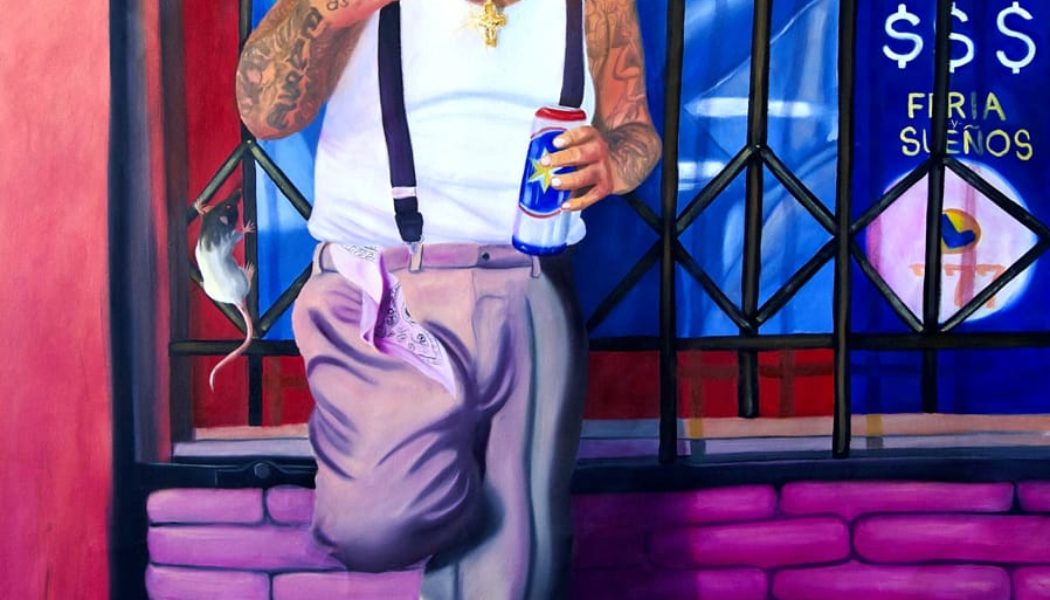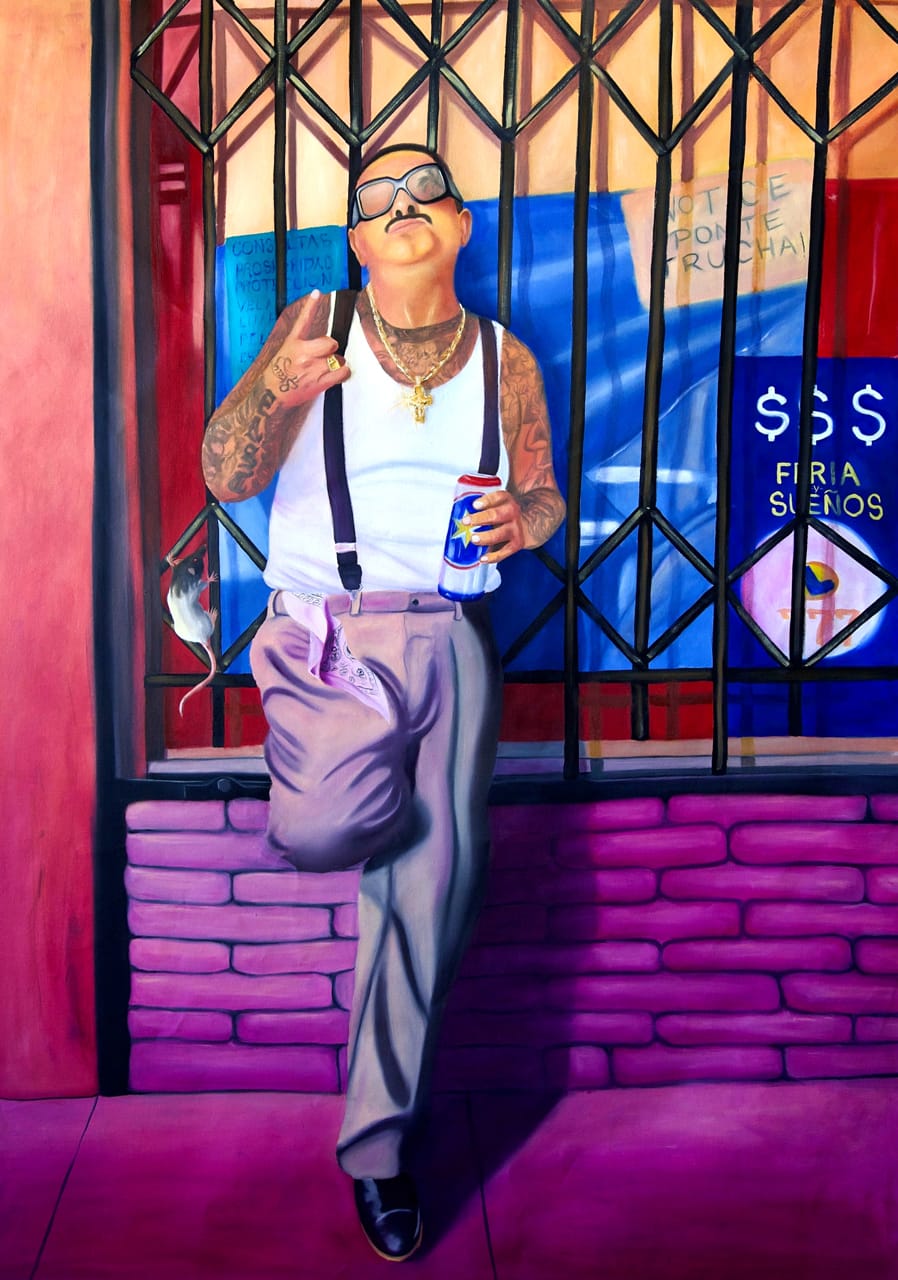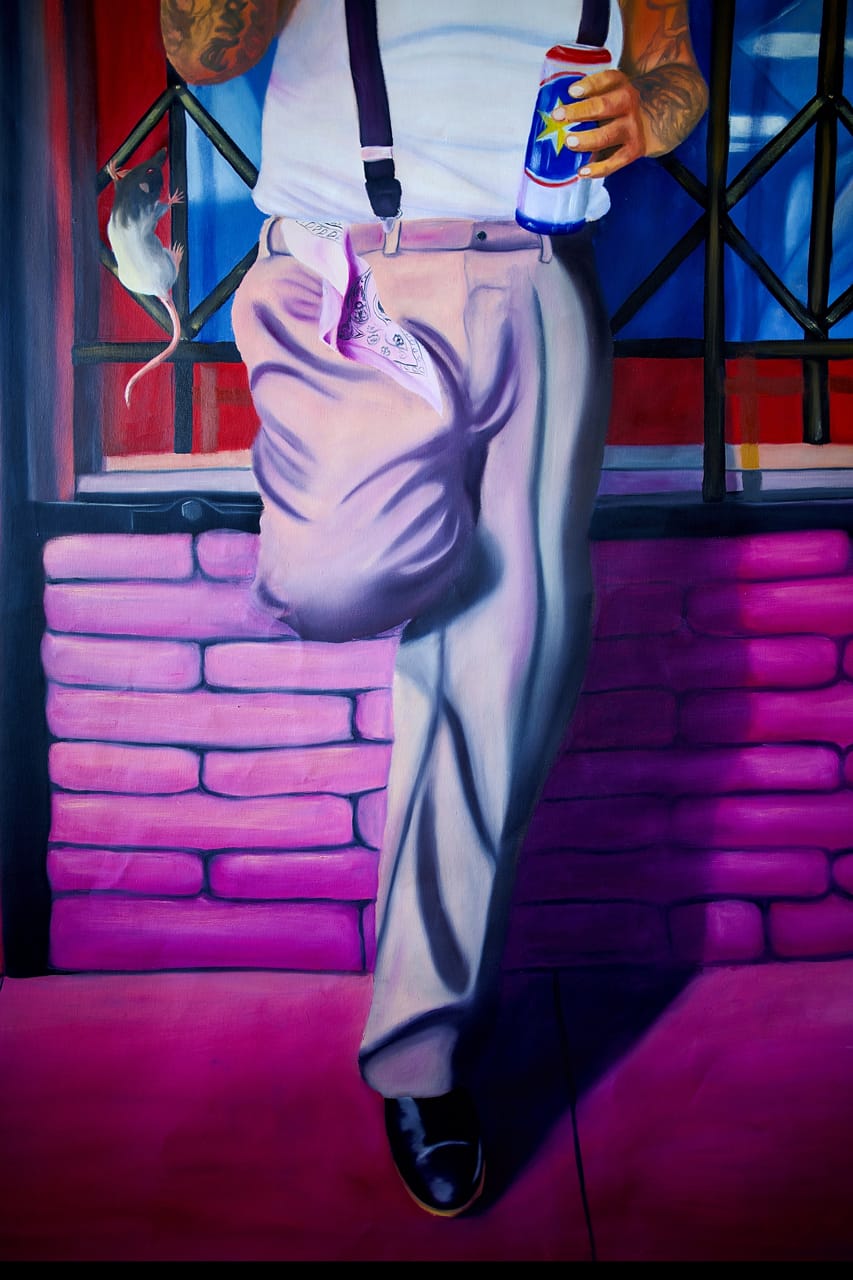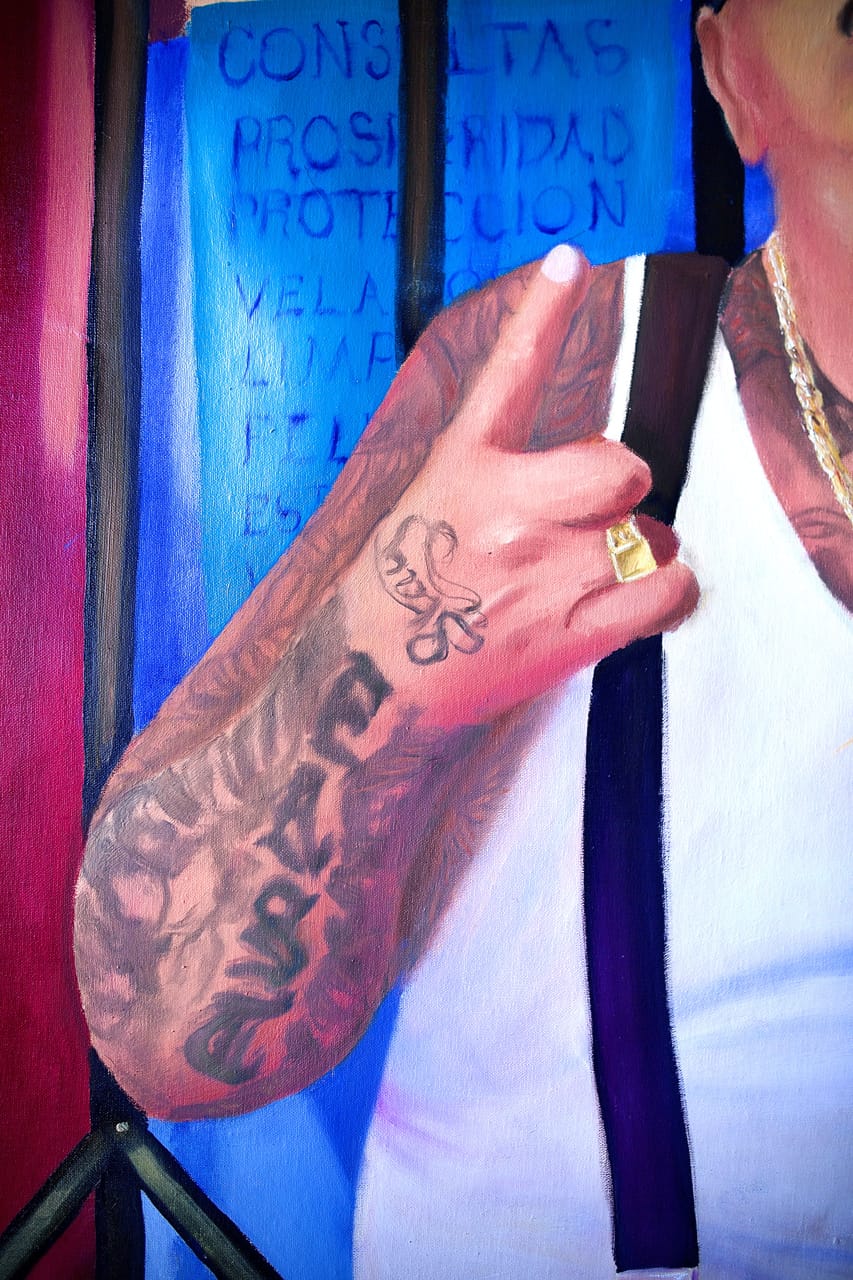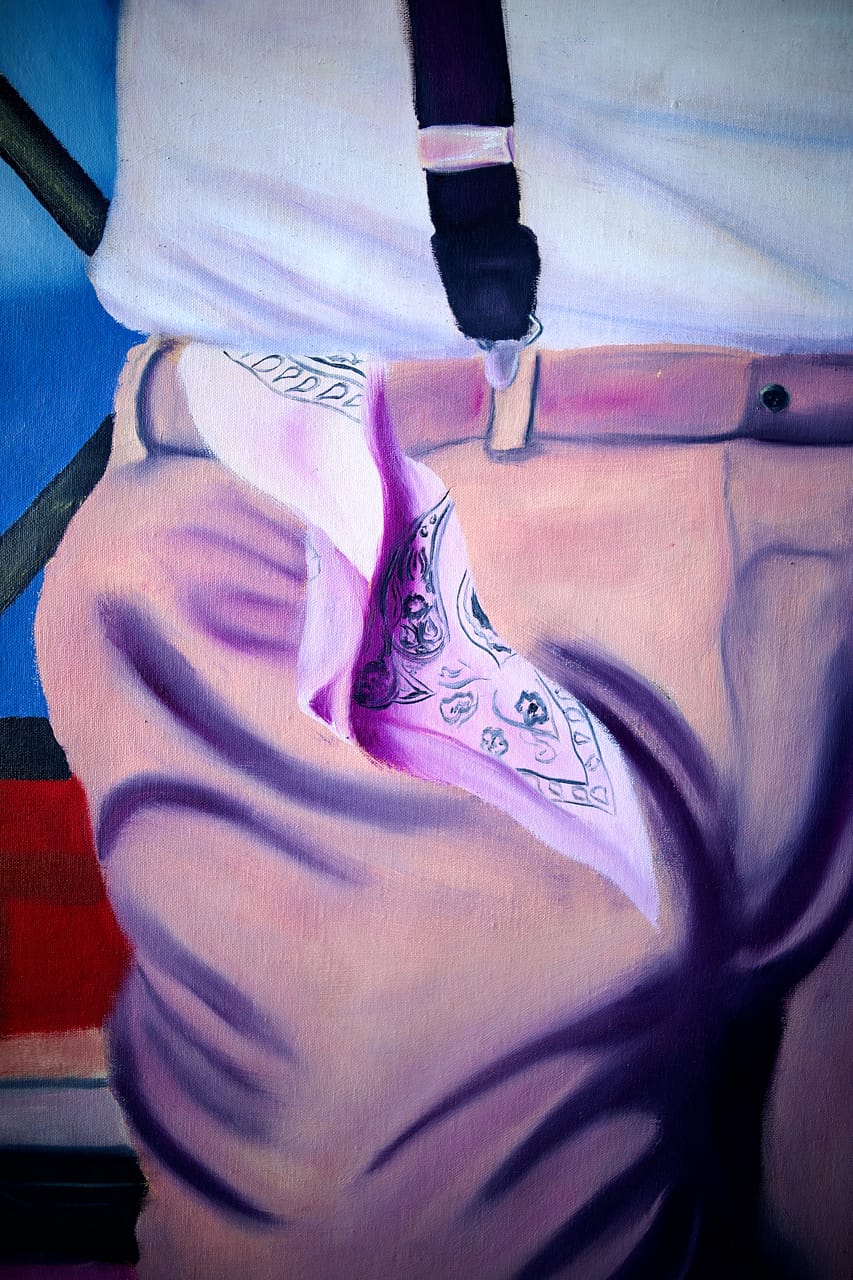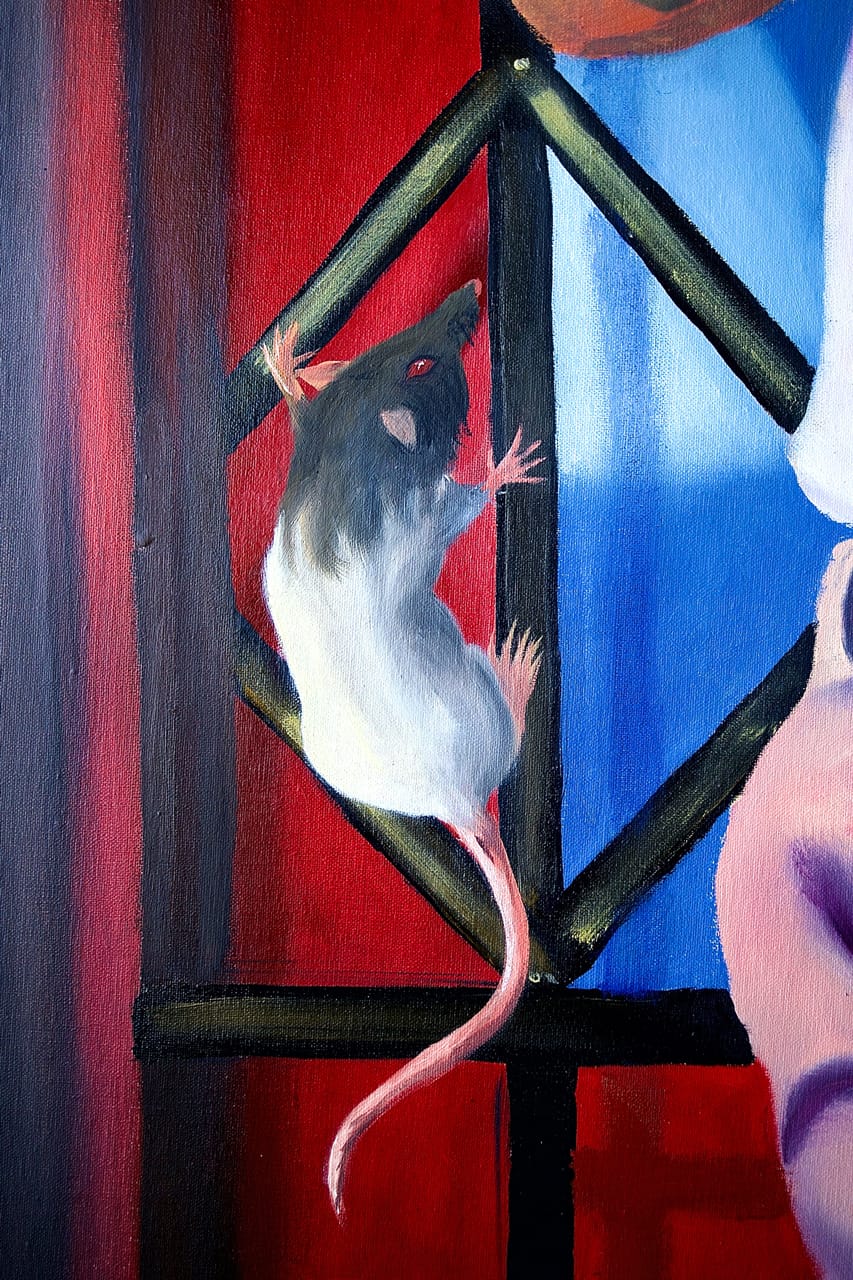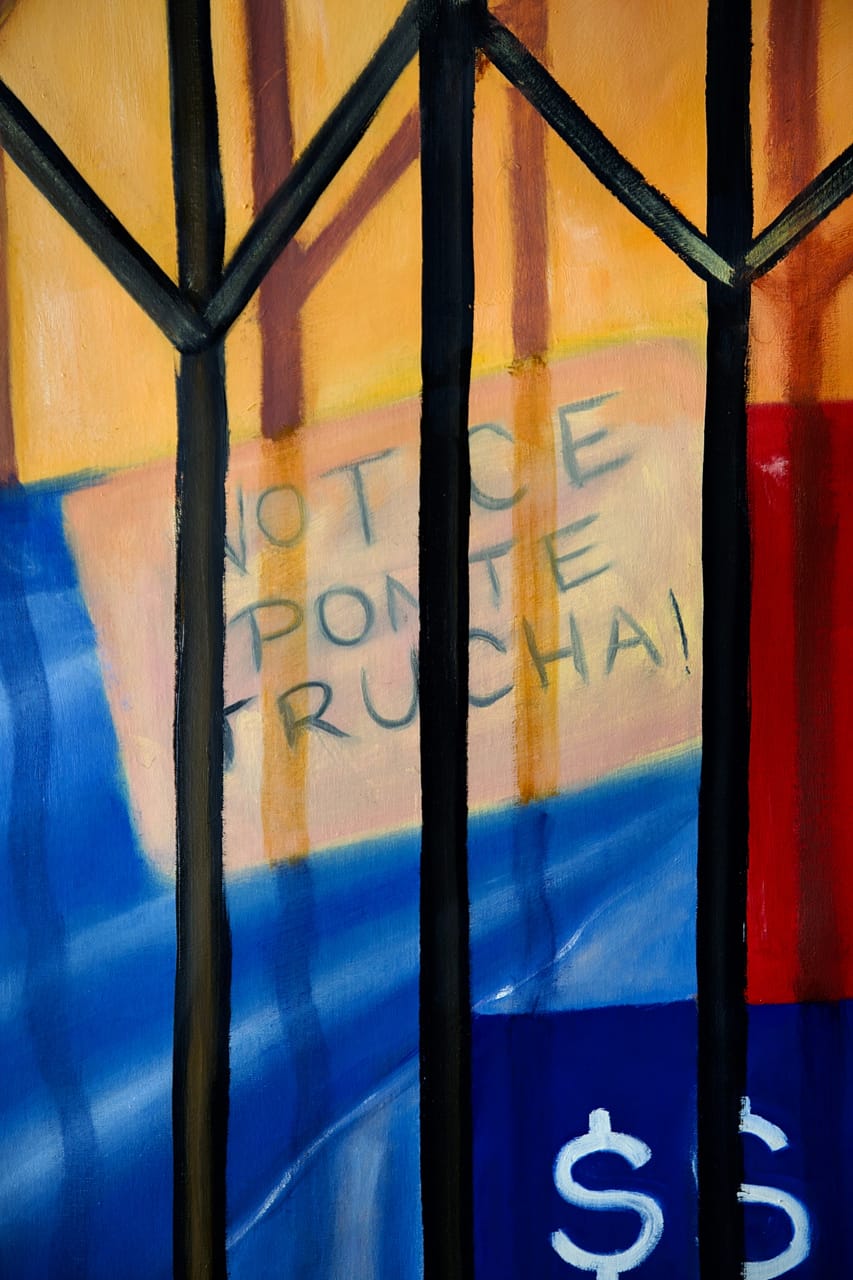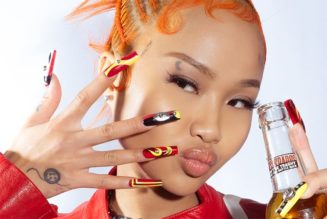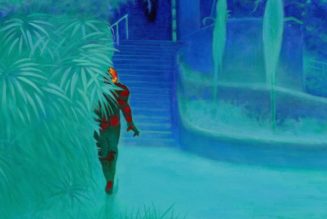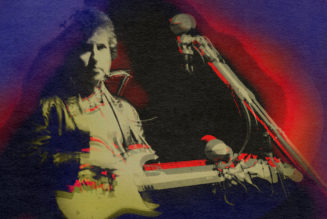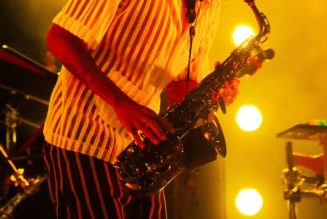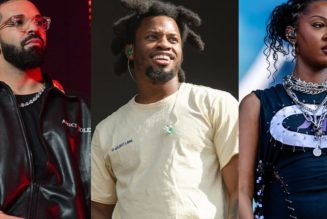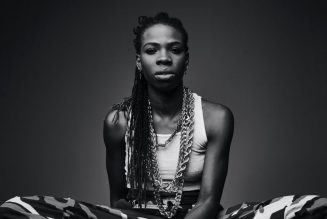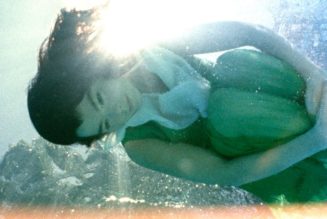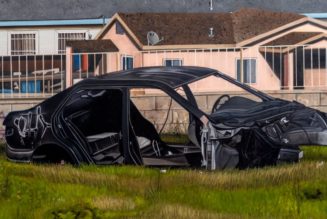“The way I make my paintings is based on my connection to people,” says Eric Mancha. The Texas-born, LA-based artist is calling in from his studio to talk about Eastside Pepe, his latest artwork that draws inspiration from a serendipitous meeting Mancha had in LA’s Boyle Heights neighborhood.
Mancha views the subjects of his paintings as part of his extended community and uses his meetings with his subjects (chance encounters, more often than not) as an opportunity to communicate emotions through their likeness — always with their permission, of course. Besides their expressive use of form and color to spotlight their subjects, Mancha’s works aim to make his community feel both seen and represented in spaces they usually do not. During his 2022 Que Somos show at the Beverly Hills gallery Great Art Space, Mancha used his placement to celebrate the working-class people that keep the affluent neighborhood humming with little to no recognition.
“People who had been working in Beverly Hills for 20 years, parking cars at the valet or working at restaurants, would go into the gallery and tell the gallerists that they’d never seen anything that represented them in this part of town,” says Mancha, noting the feedback as a career highlight. “I can’t think of anything more powerful that art can do besides making someone who feels underrepresented and unseen feel like they’ve been recognized.”
When it’s mentioned that his artwork is a documentation of Chicano culture and community in Los Angeles, Mancha concurs. “It’s a chance to document [the community] in a visual style that’s my own,” he says. “With Eastside Pepe I wanted anyone who looks at it to feel like they’re in the middle of an oversaturated Los Angeles sunset, the kind where the fog mixes with the sun and turns the sky purple.”
Mancha met Pepe, the subject of his latest painting, during a particularly Los Angeles excursion: a quick trip to a convenience store to grab a pack of Pro Club white tees. “I saw Pepe posted up by the store drinking a beer, and he just had so much swag, man,” the artist reminisces, noting that his black penny loafers, tan slacks, black suspenders and white tank top made him look like he’d climed straight out of a time capsule. “I could tell he had been out partying all night and all day, and I’m pretty sure he’d just gotten out of prison.”
Pepe and Mancha struck up a conversation, with the latter impressed by the former’s perspective. “Sometimes the odds are stacked against you, and you’ve just got to keep going through some difficult sh*t,” Mancha says. “The stories he told me and the resilience he showed really resonated with me, and I wanted to highlight someone who was standing on business.”
After snapping a picture as a visual reference, Mancha reimagined the shape, color palette and signs of the environment, with bright yellow, orange and red hues up top giving way to cooler purple and blue tones by the bottom. The “Notice” sign in the window, which would usually indicate a negative message — the presence of security cameras, a warning against shoplifting — instead reads “Ponte Trucha,” a slang term that translates to “be vigilant,” and another “Suenos” sign acknowledges the importance of having and pursuing dreams. Pepe’s glinting gold chain, dark sunglasses reflecting LA’s palm trees and purple bandanna lock in the mood, one of wisdom, defiance and optimism, all rendered in oil on canvas.
Mancha is hoping to reconnect with Pepe so he can show him the finished work. “He gave me a number to call him when I finished the painting, but I haven’t been able to get in touch with him!” he exclaims. “I’m putting the word out there, because I’d very much like for him to see this.”
After all, as Mancha knows well, there’s no feeling like being seen.
Check out more of Eric Mancha’s work on his website.
